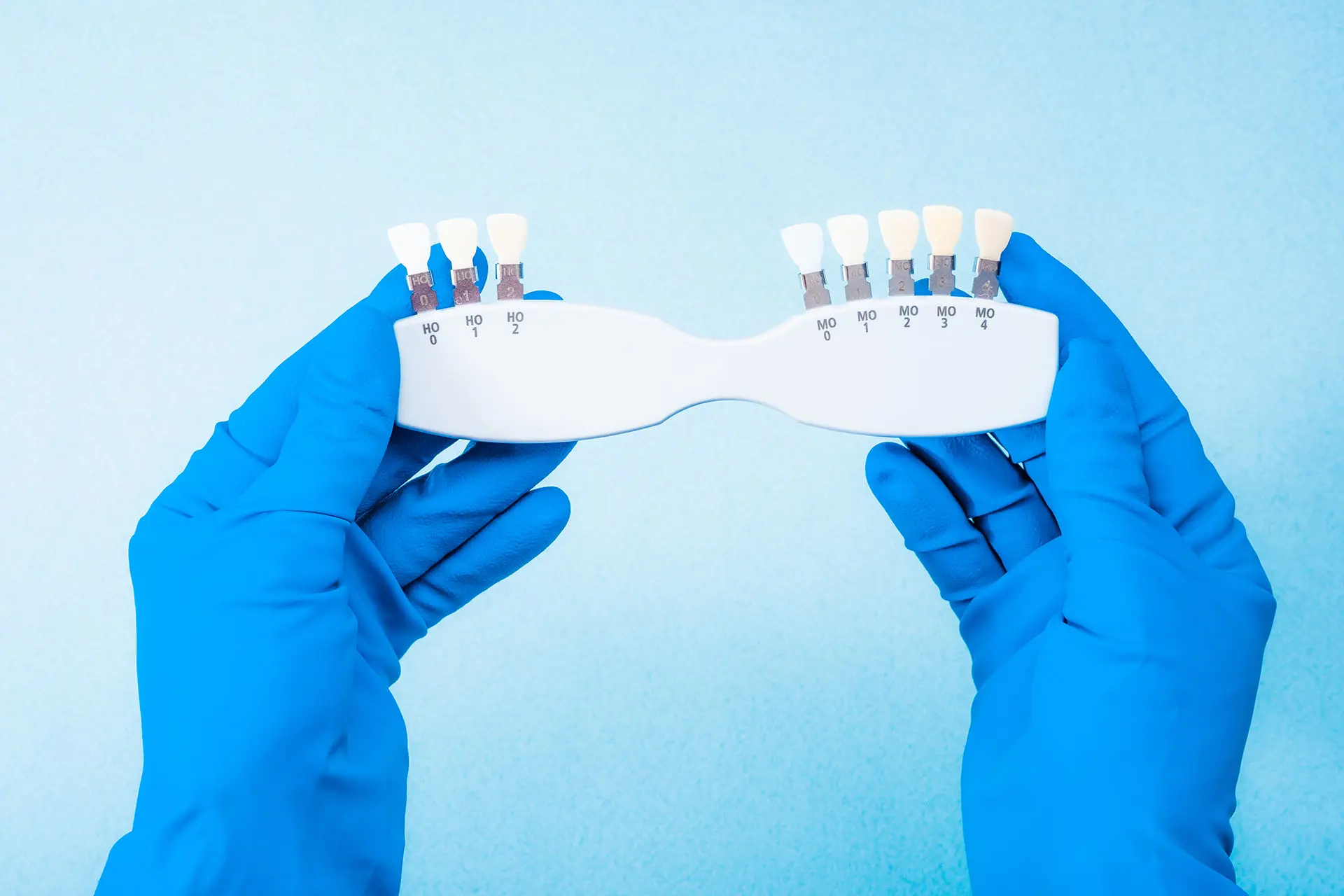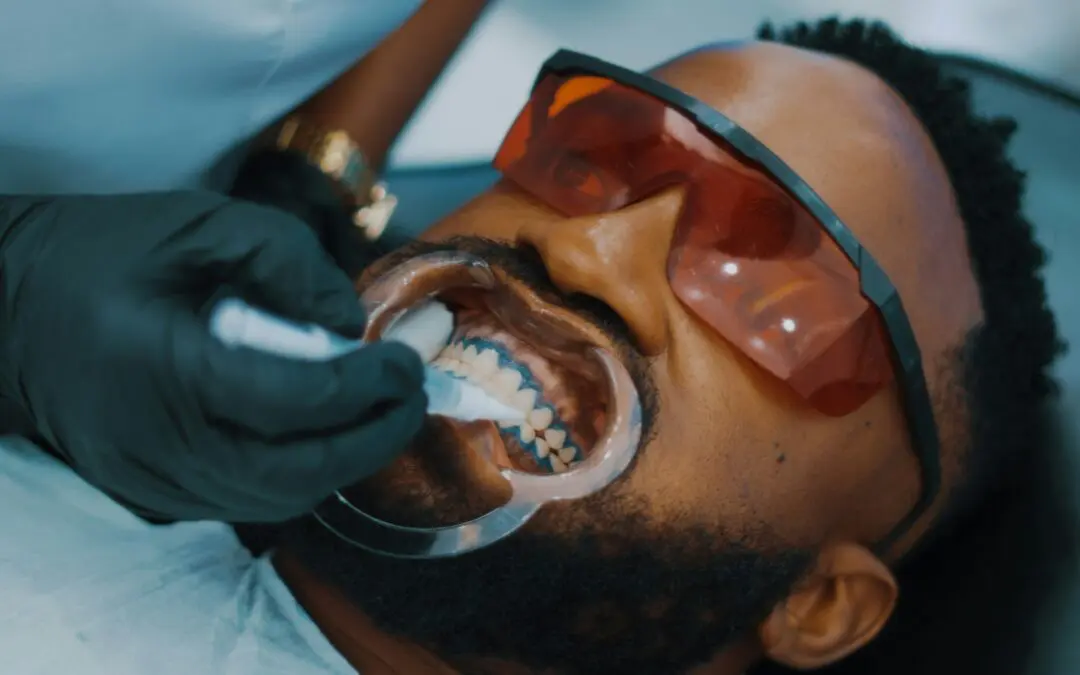A radiant smile starts with choosing the proper dental treatment for your needs. Teeth whitening and dental bonding are both popular ways to improve your smile, but they serve different purposes. Teeth whitening treatment brightens stained teeth and tackles discolouration, while dental bonding repairs chips, cracks, or gaps in your teeth with composite resin.
Teeth whitening works by applying whitening gel or whitening agents to the tooth surface. Treatments can be done in office with a special light or at home using home whitening kits. Most patients see results in about two weeks, achieving a brighter, more confident smile.
How Teeth Whitening Works
Teeth whitening treatments lighten enamel by breaking down dental stains caused by coffee, tea, wine, or natural aging. There are two main methods:
- In-office whitening: Fast and effective, using stronger whitening gel and sometimes a special light.
- At-home whitening: Slower, gentler, and convenient, often using trays with whitening agents or strips.
Most patients see noticeable brightening in a few weeks, with proper care prolonging the results. Whitening is ideal for people with generally healthy teeth who want to improve the shade of their smile.
How Dental Bonding Works
Dental bonding, also called composite bonding, uses a tooth-coloured resin material to restore chips, cracks, or minor discolouration. The bonding procedure is quick, typically completed in a single appointment. Your dentist shapes the resin material to match your natural teeth, then hardens it with a special light. Bonded teeth are polished to blend seamlessly with your smile, creating a natural, long-lasting result.
The bonding procedure typically involves:
- Cleaning the tooth surface
- Applying composite resin and shaping it to match natural teeth
- Hardening the resin with a special light
- Polishing to create a smooth, natural finish
Bonding can also fill small gaps or improve the appearance of uneven teeth. While the results are long-lasting, proper care, like avoiding chewing hard foods on bonded teeth, helps keep your smile intact.

Deciding Between Whitening and Bonding
Teeth whitening vs dental bonding depends on your goals. Whitening is best for brightening stained or discoloured teeth, while bonding fixes physical imperfections like chips, cracks, or gaps. In some cases, patients choose both: whitening first to lighten natural teeth, then bonding to match the shade and restore a flawless smile.
Dentists recommend discussing your goals and oral health with a professional to select the treatment that will create the best results.Reach out to Fallowfield Dental to discuss your goals and oral health. We’ll guide you toward the treatment that helps your smile shine its brightest.
FAQ
What are the disadvantages of teeth bonding?
Bonded teeth can chip or stain over time and may need touch-ups. To protect the resin material, avoid biting hard objects.
Does dental bonding turn yellow?
Bonding can discolour from coffee, tea, smoking, or wine, though proper care and routine dental cleanings can keep bonded teeth looking natural.
How long to wait between whitening and bonding?
It’s best to wait a few weeks after whitening so your natural teeth reach their final shade before matching the composite resin.
Can dental bonding fix discoloured teeth?
Yes. Bonding can cover discolouration and create a uniform shade, especially if whitening alone won’t achieve the desired results.

